Previous Best Human Rights Books lists: 2017, 2016 and 2015. This year, our Best Human Rights Books list will be published quarterly. With so many great books out there, the end-of-year list was simply getting too long – however, there will still be a year’s-best list at the end of 2018.
This list consists mostly of books published in the first three months of 2018, plus several from late 2017. All publication dates are for the U.S. editions. The books are about and/or set in Africa, China, Columbia, Europe, Germany, Guyana, India, Indonesia, Iran, Kenya, Palestine, Syria (2), the United States (6), Tibet, and global (2).
Only two of the 18 titles were written in a language other than English. The low number of books translated into English has been a matter of concern for some time.
While the overall number of books published in English is immense, to give a tiny sense of just what English-language-only readers are missing in terms of ways of thinking and feeling, perspectives and style, check out this year’s impressive longlist of the Man Booker International Prize for novels translated into English, of which I can particularly recommend Wu Ming-Yi’s The Stolen Bicycle, Javier Cercas’ The Impostor, Han Kang’s The White Book, Virginie Despentes’ Vernon Subutex 1, and Jenny Erpenbeck’s Go, Went, Gone, the first book on the list below. All are written in styles and about things one hardly finds in English. (The Prize just changed Wu’s nationality from Taiwan to Taiwan, China, against the writer’s wishes and under apparent pressure from the Chinese government. This is totally unacceptable and highly ironic in that The Stolen Bicycle is all about Taiwan’s twentieth-century history, the sort that goes some way toward building a national identity.)
All book links bring you to the Book Depository’s website. If you buy the book through the link, 5 per cent of the order will go to Hong Kong Free Press.
Go, Went, Gone, Jenny Erpenbeck (New Directions) translated by Susan Bernofsky, originally published in German in 2015, published in the U.S. in September 2017

The protagonist of Erbenbeck’s novel is a recently retired Classics professor, a widower without children. One day, he passes a demonstration of migrants without even noticing it, then hears about it on the evening news and wonders why he didn’t see it.
This leads him to seek out the migrants and eventually befriend them. In doing so, he learns about their lives and the impossible barriers they come up against, not least of all, state bureaucracy. The title alludes to the migrants learning German verb tenses and serves as both a temporal and spatial metaphor.
Richard, the protagonist, is from the former East Germany, which produced its fair share of political refugees. The African migrants he befriends have travelled great geographical and cultural distances to arrive where they are and, under EU rules, have no chance of staying there.
The novel is beautifully written, paced like a meditation. It is about empathy toward others different from oneself, curiosity, tolerance, openmindedness, the brokenness of the European asylum system, and living in limbo.
A State of Freedom, Neel Mukherjee (W.W. Norton) published in the UK in July 2017, in the US in January 2018
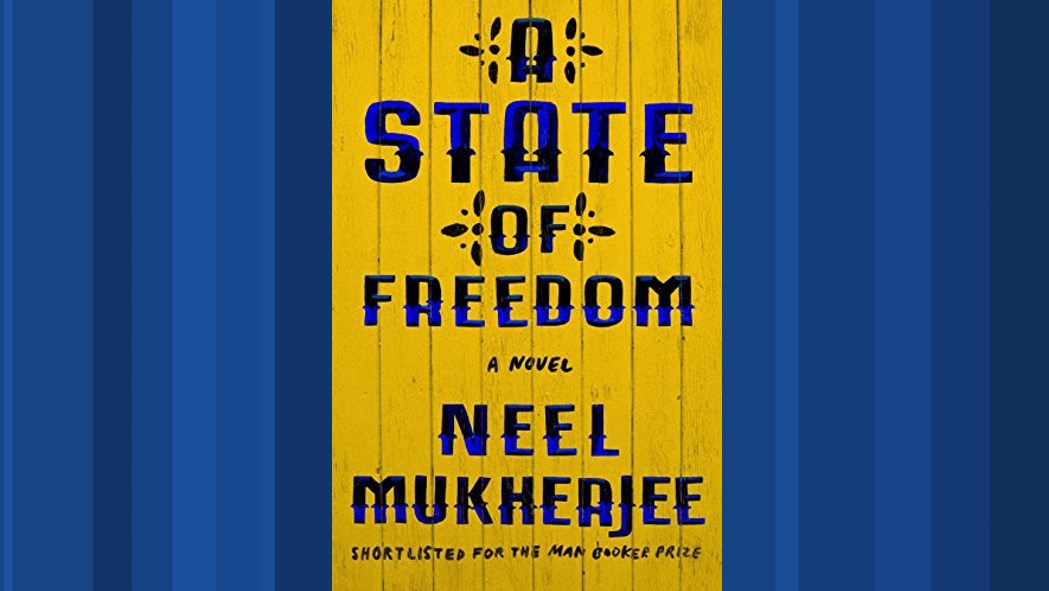
As its title implies, Mukherjee’s novel is intended as a response or successor to V.S. Naipaul’s Booker Prize-winning In a Free State of 1971. The novel starts with a Naipaul epitaph (“After all, we make ourselves according to the ideas we have of our possibilities.”) and is both an homage to him as a great writer, not least about human cruelty and despair, and an argument with him.
Mukherjee certainly rises to Naipaul’s level as a prose stylist. But more often than not, Naipaul focused on “the human stain” — the way that human beings simply were, and the mess they made of their lives and society as a result. Naipaul was a supreme and severely anti-sentimental skeptic about the idea of social progress.
Mukherjee, on the other hand, treats his fallible characters with great empathy, suggesting that empathy itself, however flickering and distant it may appear, is one possible way out of the human predicament, spiritually and politically. Thus, the contrast between the two writers’ world views is “no way out” versus “no easy way out”.
A State of Freedom also structurally resembles In a Free State: Rather than being one continuous novel, it is constructed as a series of five stories, some of which are only superficially related.
Two are closely linked: The emotional center of the novel is two stories about two girls from a village in Jharkand. One goes to Bombay to work as a domestic servant and is virtually imprisoned by her employers. The other joins the Maoist revolutionaries in the forest.
The third story is the most difficult to read, excruciating in its cruelty, about abuse of animals, a bear in particular, with the main abuser being a man at the bottom of the social hierarchy who used to being abused himself.
While unmistakably describing Indian realities, Mukherjee’s highly sculpted novel has a parable-like quality that could apply to many societies, including our own.
The Last Earth: A Palestinian Story, Ramzy Baroud (Pluto Press)

Baroud is a Palestinian journalist and himself a refugee, having grown up in Gaza. He has already written two excellent books, one about the second intifada and the other about his father’s life. The Last Earth is a collection of true stories of individual Palestinian and their families.
While it tells nine stories at length, it is epic in scope, meant to represent the Palestinian experience. The main impression it leaves is of immense suffering and injustice, of an intensity which may not be entirely apparent from journalistic or historical accounts.
The effect of the stories is somewhat similar to that of oral history, a clamour of voices amounting to a culture, though all but one is told in the third person. The book opens with the story of “Marco”, who was born and grew up in the Yarmouk Palestinian refugee camp in Damascus.
It has been destroyed in the Syrian war (this by now iconic photo of destruction was taken there), forcing Marco and a woman he met while volunteering at a hospital treating war victims to flee. He eventually makes it to Europe, a refugee two times over.
The second story goes back to the original Nakba of 1948 and tells of a family forced to flee their land just north of Gaza. The third focuses on a matriarch who loses her home and then, years apart, her two sons to the conflict, in the process becoming an activist herself.
The fourth, perhaps the most powerful, follows Hana, whose brother was killed by the Israeli army, immediately rendering her suspect in Israel’s eyes. She is imprisoned on numerous occasions and brutally tortured, though she is never tried or convicted of a crime.
She holds the record for the longest hunger strike by a Palestinian female prisoner and is only prevented from dying through the intervention of the Palestinian Authority, which cuts a deal with Israel of which she disapproves.
The longer the book goes on, the more surreal the tales become, and Israel is not the only villain. In one story, a Bedouin boy who runs away from home to join the freedom struggle ends up, as an adult, indefinitely separated from his wife and children who live in Syria, where he spent upwards of a decade in prison before being deported.
By the end of the book, one is left to wonder how much longer the Palestinians must endure this suffering.
No Turning Back: Life, Loss, and Hope in Wartime Syria, Rania Abouzeid (W.W. Norton)

“Revolution is an intimate, multipart act. First, you silence the policeman in your head, then you face the policemen in the streets.” The thing is, when you revolt in a place as repressive as Syria, there’s “no turning back”.
The product of more than six years of reporting in Syria, Turkey, Jordan, Lebanon, the US and Europe, this book has a large cast of characters but focuses on four: Suleiman, a young man from a rich family in a pro-Assad town who decides to rebel; Mohammad, a young Islamist released from prison during the uprising who ends up with Al-Qaeda before fleeing the struggle and landing in Europe; Abu Azzam, a slightly older Islamist who ends up a commander in the Free Syrian Army; and nine-year-old Ruha who worries constantly about her relatively prosperous father turned revolutionary who leaves the family to go into hiding.
The book gives the Syrian tragedy the most human of faces, including to groups routinely demonized in the West, such as the Islamists, showing that their role in the conflict is rooted in decades of repression.
In recent years, there have been many books about Syria, but in terms of presenting through the eyes of participants and ordinary Syrians how the uprising unfolded and eventually turned into an armed revolt and then a complex mess, one can hardly do better than No Turning Back.
There Are No Dead Here: A Story of Murder and Denial in Colombia, Maria McFarland Sánchez-Moreno (Nation Books)
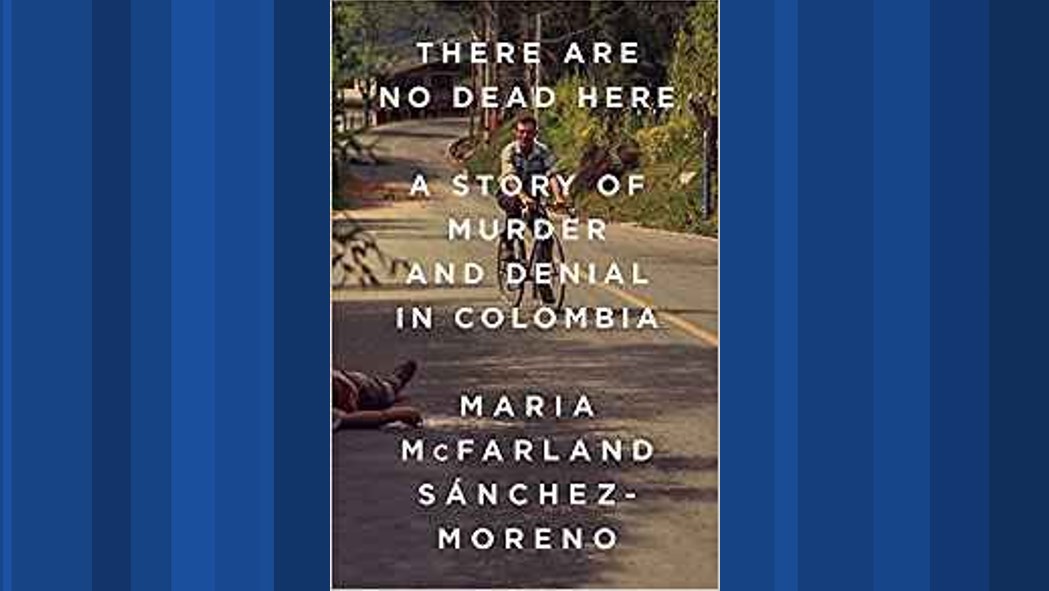
This book profiles three men who fought against the depredations of the right-wing paramilitaries of Colombia, which claimed to organize in self-defence against the left-wing FARC guerrillas but consistently massacred and terrorized defenseless peasants and villagers especially in the 90s and 2000s.
They were immensely powerful, with contacts among the military, the police, the intelligence agencies, the political establishment and the wealthy, to the point where it can be said their culture of violence and corruption metastasized into most organs of the state. For years, they committed crimes against humanity with impunity.
In the face of constant threats to their lives (one of which was eventually made good on), the lawyer Jesús María Valle, the prosecutor and judicial investigator Ivan Velásquez, and the journalist Ricardo Calderón attempt to hold them accountable.
The first part of the book is a long slog because the struggle is so immense and they face such long odds and so many defeats. If you’ve seen “Narcos”, you will be familiar with part of this story, as the narco-traffickers and the paramilitaries overlap.
The long slog of the first part of the book effectively mirrors just how difficult the struggle was, with seemingly endless setbacks, but eventually, some light at the end of the tunnel begins to appear. The book could be Exhibit A in defence of the argument that strong, independent media and legal institutions are absolutely necessary to any decent, democratic and rights-respecting society.
The efforts of the three protagonists are partially vindicated when, after many years, dozens of members of Congress and officials in the government are convicted of crimes related to their connections with paramilitaries, and DAS, the abusive intelligence agency, is shut down.
What’s more, a new president wins the Nobel Peace Prize for signing a peace agreement with FARC that brings the longest-running, deadliest war in the western hemisphere to an end.
The Killing Season: A History of the Indonesian Massacres, 1965–1966, Geoffrey B. Robinson (Princeton University Press)
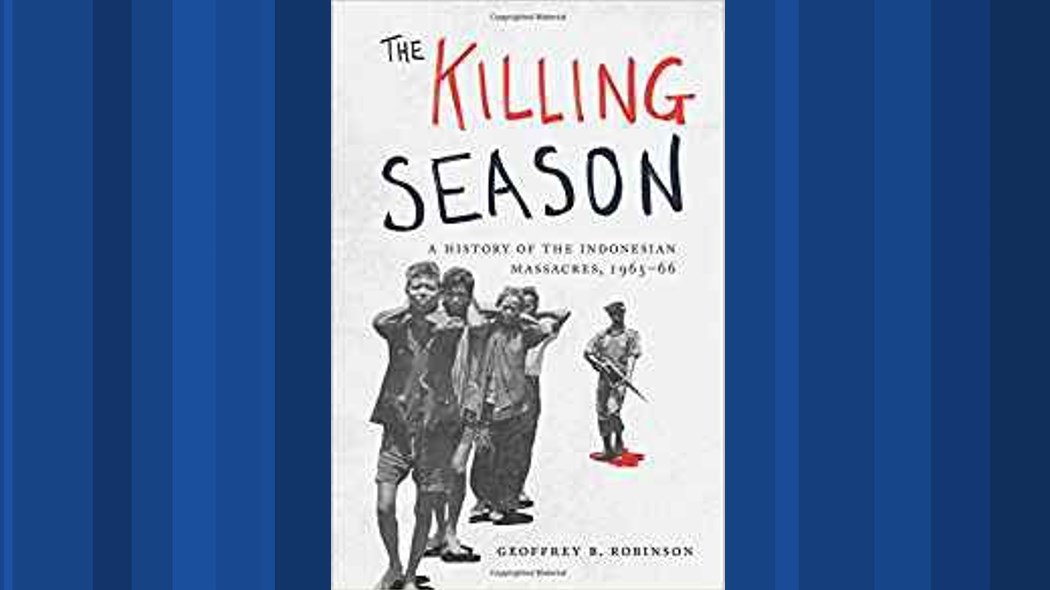
Joshua Oppenheimer’s hit documentary “The Act of Killing” probably brought more attention worldwide to the Indonesian genocide than anything else before, and this largely because it was so grotesque to see the killers revelling in their exploits decades later.
His equally excellent companion film “The Look of Silence”, from the victims’ point of view, tellingly received significantly less attention.
The fact that the killers were so startlingly unselfconscious in their bragging shows Indonesia’s lack of progress in coming to terms with the genocide’s legacy. Indeed, China is probably the only country which has made less progress in addressing mass atrocities, because the perpetrator, the Communist Party, is still in power.
Film has limitations in telling complex history. Robinson’s book tells the story more comprehensively, coherently and insightfully than any I’ve come across. All the questions you may have had after watching “The Act of Killing” are answered here.
Now an academic, Robinson was formerly Amnesty International’s researcher on Indonesia. Ever judicious and disciplined, he avoids referring to the genocide with that term while discussing the controversy surrounding calling it that.
According to international law, technically it wasn’t a genocide since the legal definition only encompasses the targeting of national, ethnic, racial or religious groups, and the Indonesian genocide targeted political enemies. Still, the same can be said for the Cambodian genocide and yet there is widespread consensus today that that term fits.
In fact, part of the point of Robinson’s books is how under-recognized the mass killings and incarcerations (to use his preferred terms) are, both within Indonesia and internationally. Hopefully, this book will go some way toward redressing that matter.
Evidence for Hope: Making Human Rights Work in the Twenty-first Century, Kathryn Sikkink (Princeton University Press) published in the U.S. in September 2017

The title is a pointed rebuttal to a string of influential books and lines of arguments by academics to the effect that the “golden age” of human rights is on the wane. As such, this is a needed and important book.
Sikkink’s previous book, The Justice Cascade, was marvelous, showing “how human rights prosecutions are changing world politics”, as the sub-title put it, and also revealing her upbeat inclination. Her basic arguments in this book are useful but don’t go nearly far enough.
To rebut claims that human rights didn’t really come into their own until the 1970s due to Jimmy Carter’s championing of them in his foreign policy, Sikkink traces their broad (including non-Western) roots to the 1940s. And today, there is still plenty of evidence for hope: As Sikkink points out, some human rights are improving, especially women’s rights, LGBT rights and disability rights.
Having a background in Latin America, she points to that region of the world as an example of where human rights and democracy are on the up. But Latin America is perhaps an outlier in that respect. Indeed, the weakness of Sikkink’s book is that it doesn’t examine the situation of the world as a whole to find “evidence for hope”, and without that, its not all that encouraging.
For example, China is almost entirely overlooked, even though the Communist Party is the biggest, most powerful adversary of the concept of the universality of rights and the idea that human rights laws and standards must be applied consistently around the world.
Since the book doesn’t really contend with the changing dynamics of global politics, it goes too far in the direction of saying everything’s really OK with human rights. It’s not. First of all, there’s the decreasing commitment on the part of governments, including long-standing democracies, to human rights. Second there’s the fact that democracy is deteriorating in many places in the world.
Human Rights in China: A Social Practice in the Shadows of Authoritarianism, Eva Pils (Polity) published in the U.S. in December 2017
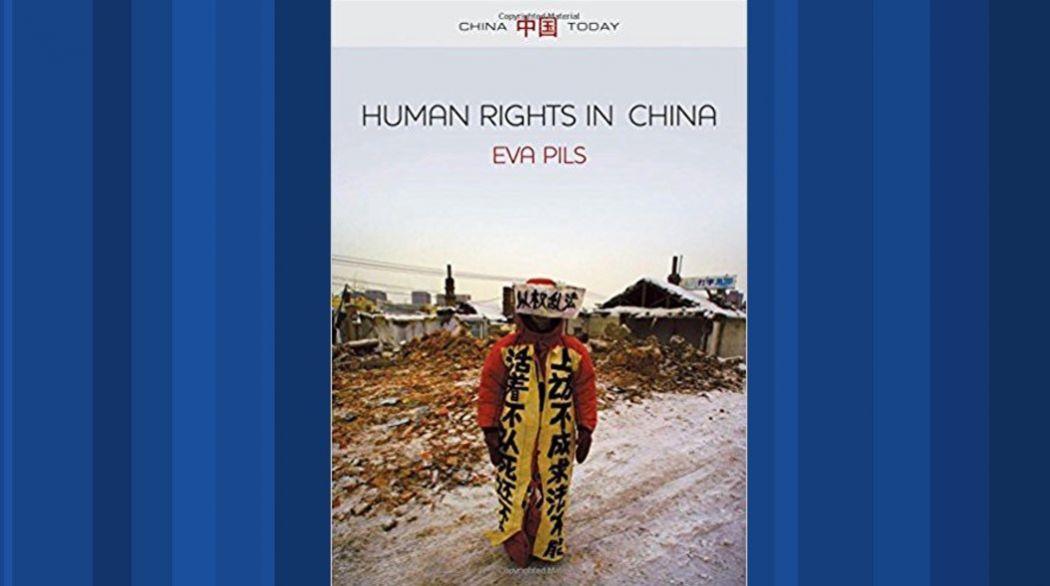
As the introduction puts it, this book “challenges the paradigmatic, predictive expectation of [political] transition through top-down reform as increasingly untenable,” a very important raison d’être. Pils is one of the foremost experts on human rights in China, especially in regard to the law.
Her book might have benefited from being more straightforward and directly polemical — its critique is a little too buried and hedged — but that’s not the judicious and intellectually rigorous Pils’ style.
Human Rights in China is part of Polity’s China Today series, and as such is meant as something of a introduction, if very much in an academic vein. There are few as well-placed as Pils to introduce the topic.
She discusses the centuries-old yuan tradition of righting wrongs and compares it to the liberal human rights tradition, seeing the two as largely complementary, then contrasts them with the regime’s counter-discourse on rights.
Some of the best parts are on the psychology of systematic state torture and the chapter demolishing the official argument — which has become a propaganda trope — equating development (by which is essentially meant economic growth) with the improvement of human rights.
Pils asserts that “development” is the result of rights violations, not the solution to them as the Party-State would have it. She then looks at three areas to show what she means: the impact of urbanization on land and housing rights, the right to education of rural and migrant worker children, and the human rights effects of environmental degradation.
This is a much needed critique, not least of all to address the gross over-simplification of that tired platitude, “China has lifted hundreds of millions out of poverty.” Well, actually, no: when given a modicum of economic freedom, hundreds of millions of Chinese have used it to lift themselves out of poverty while the Party-State has continued to deny them a wide array of basic rights.
Hopefully, the rest of the world is beginning to realize what a threat this poses to a global order and human rights system built up over seven decades.
A More Beautiful and Terrible History: The Uses and Misuses of the Civil Rights Movement, Jeanne Theoharis (Beacon Press)

In 1966, only 28 percent of people in the United States had a favorable opinion of Martin Luther King Jr. By 1987, 76 percent did. By 2000, King and Rosa Parks came first when students were asked to name the most famous Americans after presidents.
In 2013, Parks became the first African American to have a statue in the U.S. Capitol Building. Paul Robeson and Malcolm X were once considered national security threats and now are on postage stamps.
This might sound like a triumph of the Civil Rights Movement, but Theoharis contends that the mainstreaming of the movement in US society comes at the expense of taming and defaming its history. It has been sanitized and incorporated into the optimistic narrative of American progress.
Within this narrative, figures such as King and Parks, who in their time were regarded with disapproval, skepticism and suspicion by a large segment of white America, have had their rough edges sanded down for safe popular consumption.
The purpose of this book is to remind of what has been selectively forgotten, which, in short, is that the movement was more “radical”, divisive and unpopular than now portrayed.
Theoharis has noticed that many, especially those of a liberal persuasion whom one might expect to be sympathetic, have compared the Black Lives Matter movement negatively with the Civil Rights Movement, and they can only do that by having a very selective memory of the latter.
Sanitizing the Civil Rights Movement also allows many to remain blind to the tenacious forms of racism that have persisted since then. The book is most effective in reminding just how deliberately segregated the North was and, to a large extent, still is in terms of housing and education.
Refuge: Rethinking Refugee Policy in a Changing World, Alexander Betts and Paul Collier (Oxford University Press) published in August 2017
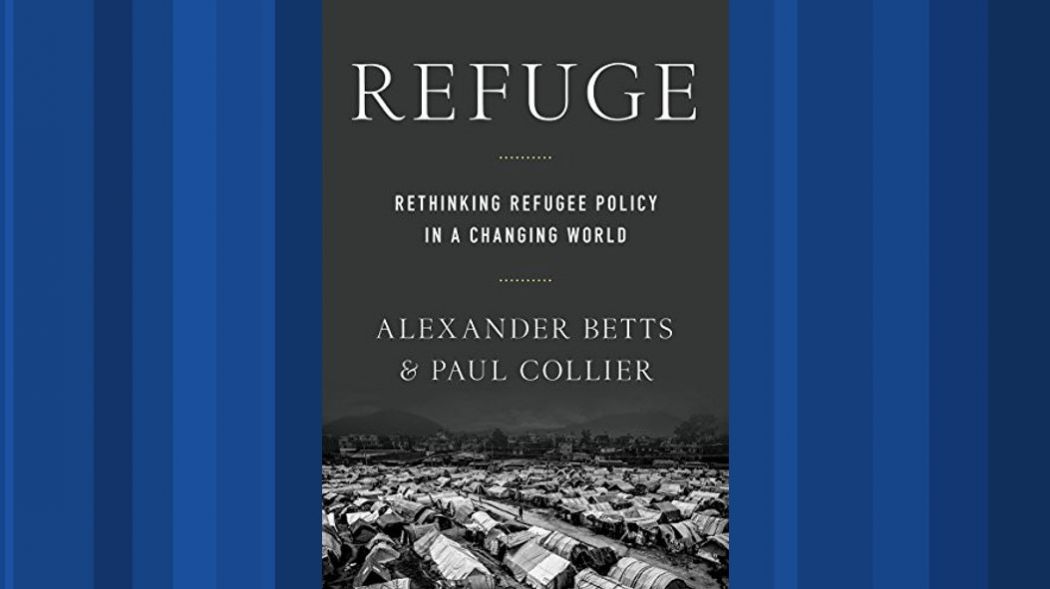
“Our new century, which will deliver wonders like unprecedented longevity, leisure, prosperity and connectivity, is also delivering record levels of displacement.” 65 million people have fled their homes in fear of violence, and the current refugee system is not fit for purpose.
Refuge outlines the ways in which it needs to be fixed and presents concrete, pragmatic proposals to do so. The current system, basically meaning the 1951 refugee convention and the UNHCR, was set up as a stop-gap measure after World War II, and has never really been seriously amended since.
The key term in the convention is “persecution”, but most refugees today aren’t fleeing persecution targeting them specifically as individuals but disorder, war and violence. The result is that different countries have wildly inconsistent definitions of what constitutes “persecution” and vastly different policies regarding refugees.
Basically, the way the current system “works” is that, on the one hand, countries neighboring others in conflict take on a disproportionately huge number of refugees. The top host countries, all low- to medium-income, are Pakistan, Iran, Ethiopia, Kenya, Uganda, and, more recently, Thailand, Turkey, Jordan, Lebanon, Congo and Chad.
On the other hand, most wealthy countries do what they can to avoid their fair share of responsibility, with a few notable exceptions, namely, Germany, Sweden, and Canada. The result is that most refugees fall between the cracks, with only about 1 percent resettled.
The average time a person now spends as a refugee is just under 20 years, mostly in places where they cannot legally work.
Betts and Collier’s critique of the European response to its 2015 refugee crisis is devastatingly incisive, just one bad decision after another — the headless heart following the heartless head, as they put it — , and the book is worth a read for this alone.
In proposing reform, their key concepts are autonomy and self-reliance, moving away from the UNHCR model of setting up huge camps far away from urban areas and instead providing assistance to refugees wherever they are and allowing them to seek gainful employment.
Their solutions are so cogent and sensible they beg the question of why they haven’t yet been taken up. They believe the problem is lack of innovation at the level of policy, but it may very well be that, all in all, the dysfunctional system that currently exists works well enough for the powers that be.
Mass Starvation: The History and Future of Famine, Alex de Waal (Polity)

In case the name does not ring a bell, de Waal is the author of the seminal Famine Crimes, which came out in 1997. This book is, in a sense, a progress report, and in that respect, it’s largely a success story: it could be sub-titled “why calamitous famines have become rare”.
We have seen “35 years of spectacular decline in famine and famine-related mortality”. We are at the point of doing away with famine entirely. But the book comes with warning signs: Just as de Waal was completing it in 2017, there were five places in the world at risk of famine, Yemen, South Sudan, northern Nigeria, Somalia and Syria, and indeed, the UN officially declared famine in parts of South Sudan that year. All five cases were associated with war.
There are various reasons the incidence of famine has declined: in particular, the demise of totalitarian ideologies which view human beings as no more than a means to an end, and great improvement in the international community’s capacity to prevent and react to famine conditions.
De Waal stresses, “The key links in the chain that leads to famine are always political.” Another way of putting that is that climate conditions such as drought may play a role but are never in themselves sufficient cause: people cause famine, powerful people engaged in what de Waal calls transactional politics.
De Waal is skeptical of the idea that climate change will cause conflict and starvation. He believes, essentially, that it is all down to the decisions that people make.
Wrestling with the Devil: A Prison Memoir, Ngugi Wa Thiong’o (The New Press)
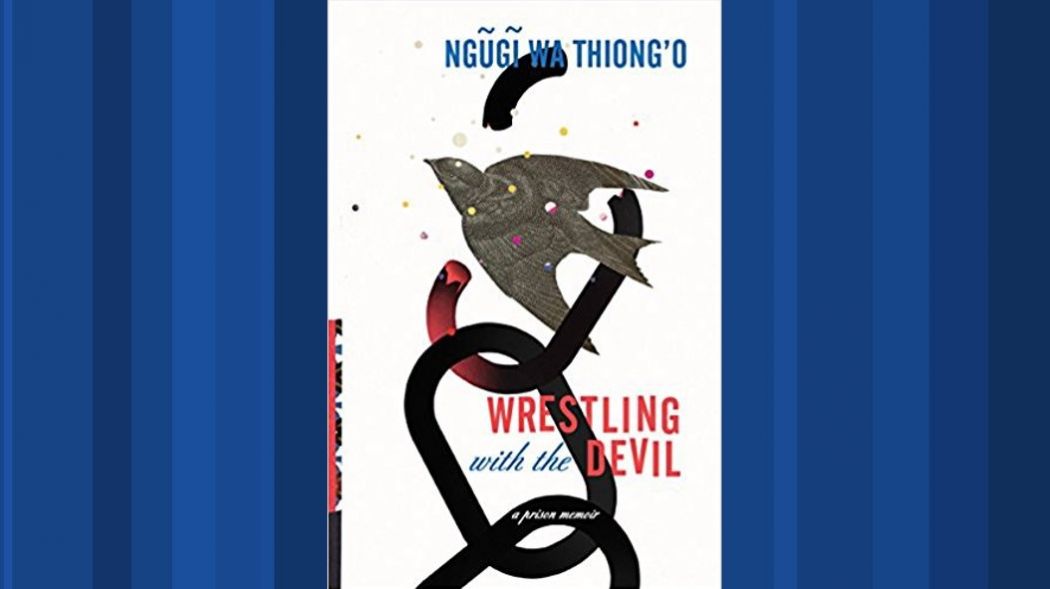
Wa Thiong’o is one of the most celebrated African writers alive today and a perennial candidate for the Nobel Literature Prize. This memoir was first published in the early 1980s, but this is the first time it’s come out in the U.S., in revised form.
It’s about the year he spent in Kenyan prison in 1978, segregated in a block for political prisoners, apparently for a play of his which offended the authorities, though he was never charged or given any reason for his detention.
Among other things, the memoir is an expression of deep disillusionment with the first government of independent Kenya after the end of colonialism, lead by erstwhile freedom fighter and eventual dictator Jomo Kenyatta.
Indeed, the early chapters read less like a prison memoir and more like a potted history of Kenya under first British colonialism and then the post-independence neo-colonialism of Kenyatta. These chapters remind of Caroline Elkins’ seering, Imperial Reckoning: The Untold Story of Britain’s Gulag in Kenya.
The title of the memoir is a double entendre: While in prison, Wa Thiong’o clandestinely wrote the now classic novel Devil on the Cross, largely on toilet paper. Wa Thiong’o’s fiction is sometimes phantasmagoric, sometimes fable-like, but his memoirs, told in a no-nonsense straightforward manner, show deep political conviction and trenchantly track the history of Kenya over the decades of his life.
This book is heartening in its firm resistance to tyranny, commitment to freedom and belief in the value of the written word.
Two More Years: A Tibetan’s Memoir, Tendar Tsering
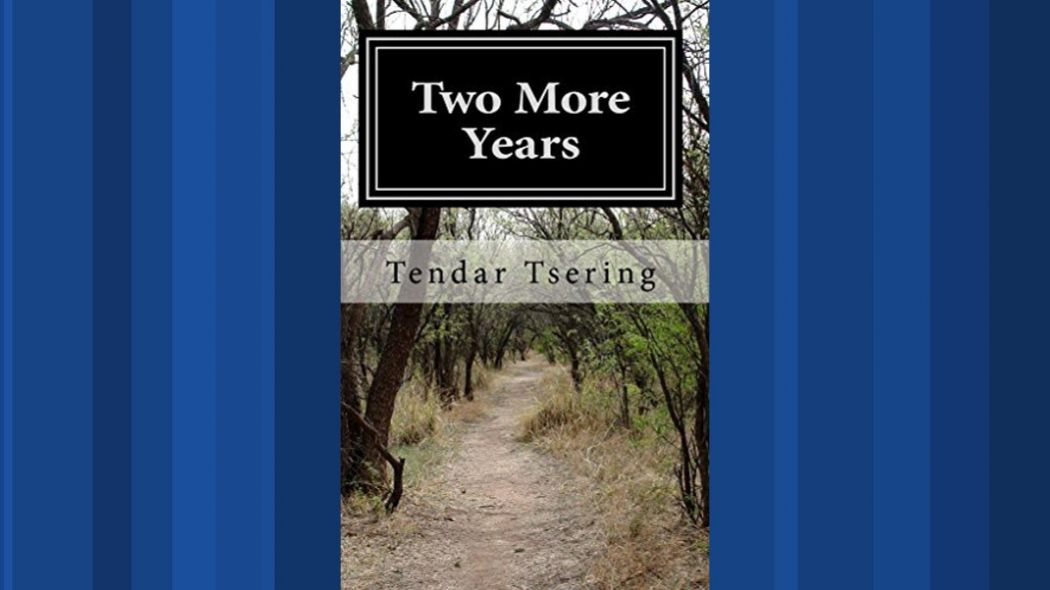
Tendar Tsering tells his story of leaving his native Tibet as a child and going to India to get an education. Since the Chinese occupation, tens of thousands of children have crossed the Himalayas to receive an education in Tibetan language, culture and religion, their parents taking the huge leap of faith required to send them away at such a young age, trusting the Dalai Lama.
Tendar’s story evocatively describes conditions in the remote village he comes from. On the one hand, there is Chinese oppression, on the other, the oppressive social customs of the people themselves; for example, the story of his cousin forced into an unwanted marriage because her family wished to ally with the husband’s family.
Tendar writes especially well about the heartache of leaving one’s family at a young age and the homesickness exacerbated by not knowing when one might see them again.
The title comes from the response that Tendar always gives his mother when she asks in their infrequent phone calls when he will come home. He still has not. Indeed, the story ends with him going to the U.S., another Tibetan exile flung out into the wide world.
A Mouth is Always Muzzled: Six Dissidents, Five Continents, and the Art of Resistance, Natalie Hopkinson (The New Press)

A cool little book. Its title is from a poem by Guyanese poet Martin Carter: “…a mouth is always muzzled/by the food it eats to live.” The second line appears on the back cover.
The whole statement would perhaps better represent the book’s tone; the first part alone sounds more fatalistic than the book is. While the sub-title mentions six dissidents and five continents, the book’s focal point is Guyana, a nation of 800,000 on the Atlantic coast of South America with a unique mixture of people of Indian, African and Amerindian descent.
Though it may appear “a small place” (to use the term Jamaica Kincaid applied to her native Antigua in her book of that name), it is, like the whole Caribbean, where the rest of the world intersected through interlocking histories of colonialism, slavery, indentured servitude, sugar, and global trade.
It’s the second-poorest nation in the Western Hemisphere, after Haiti, with the world’s highest suicide rate, and the ninth highest migration rate — 55 percent of those born there leave.
Where’s the hope in such a place on the very peripheries of the world’s attention? Perhaps in fashioning a robust multicultural identity through art and culture, Hopkinson’s book suggests: “Culture is where the future is negotiated.”
It’s a little unclear who the six dissidents of the sub-title are, but front and centre are two contemporary cultural figures, the 70-something artist Bernadette Persaud and the 32-year-old writer Ruel Johnson.
Persaud’s seen it all, thinks nothing will get better, and proclaims, “Art changes nothing here.” Johnson is a “cultural utopian” promoting culture as the way forward both politically and economically.
This book is heartening for those who believe culture is given far too short shrift in conceptualizing issues of human rights, democracy and political freedom. More books like this are needed, about supposedly out-of-the-way places and the people there working to make them better.
Soundtrack of the Revolution: The Politics of Music in Iran, Nahid Siamdoust (Stanford University Press) published in the U.S. in January 2017

A tricky title: If what is meant by the “revolution” is the seizure of power by hardline Islamists after the overthrow of the Shah in 1979, then the soundtrack is silence: virtually all music was banned.
From the late 1980s, certain kinds of music were allowed, for instance, to serve propaganda purposes during the Iran-Iraq War. Only in the last two decades has anything remotely resembling an independent music scene begun to emerge, but to this day, it is highly restricted.
The coming to power of Khatami in 1997 was a turning point, as he represented a more moderate approach, which included allowing more freedoms in the cultural sphere. Only in 2002 was the importing of pianos into the country liberalized.
That was also the year of the first ever officially permitted rock concert. Perhaps unsurprisingly, it is the latter chapters telling the story of relative liberalization, “The Rebirth of Independent Music”, that are the most interesting, with one on the iconoclastic musician Mohsen Namjoo whose very existence is a thumb in the eye of the regime, and a finale on the role of music in the 2009 Green Uprising.
This book reminded of Madeleine Thien’s excellent novel, Do Not Say We Have Nothing, about the banning of Western classical music (and anything else remotely Western) during the Cultural Revolution in China.
Together We Rise: Behind the Scenes at the Protest Heard Around the World, Women’s March Organizers (Dey Street)
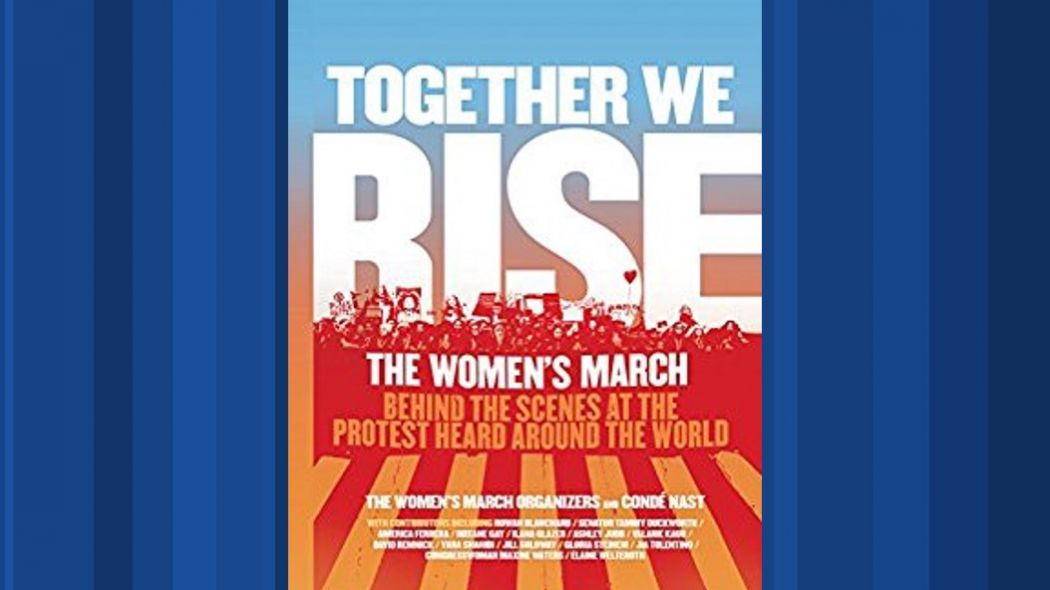
Published on the first anniversary of the January 20, 2017 Women’s March, the largest single-day protest ever held, with some 3.3 million marchers in the US and 5 million worldwide, this book is oral history, photographic documentation, and a celebration of the power of all people and especially women to change the world for the better.
Fundamentally, it was a demonstration that put forward a vision of the country and the world almost diametrically opposed to that of those in power in the White House and Congress, a vision of a more equitable and inclusive society.
The Women’s March articulated 8 Unity Principles — ending violence, reproductive rights, LGBTQIA rights, workers’ rights, civil rights, disability rights, immigrant rights, environmental justice — which go to show just how embracing and expansive it was. Can that energy be translated into the formal political power to more fully realize those principles?
The book is worth it for the great photos alone. It also has plenty of transcribed discussions of march organizers, interviews with key actors, and short essays from a wide array of mostly well-known participants and observers.
The Feminist Revolution: The Struggle for Women’s Liberation, Bonnie J. Morris and D-M Withers (Smithsonian Books)

This is like a scrapbook of the history of the women’s movement in the United States, stretching from the 1960s to today, with essays, first-hand accounts, posters and photos. Beautifully laid out and easy to read, it’s a great introduction for a newcomer and a great reminder to people who think they know the story pretty well.
It’s divided into thematic chapters that take the reader through the last five decades, with topics ranging from civil rights, the physical and mental treatment of women, sexuality and lesbian feminism, the workplace, and publishing and the media, to music and the arts.
It complements fuller histories like No Turning Back: The History of Feminism and the Future of Women and When Everything Changed, bringing us up to the Women’s March of the present. Overall, it gives a sense of huge progress, of just how far we’ve come, and of how far yet there is to go.
The Good Fight: America’s Ongoing Struggle for Justice, Rick Smolan, Jennifer Erwitt (Against All Odds Productions)

A big photographic overview of the struggle for rights in the United States with a kind of optimism some may associate with Americans. Yes, despite the dark sides of its history, the country appears to have the capacity to change for the better, and has done so in significant ways.
The focus here is on those who have sought to bring about change, but one might also ask why people have had to fight so long and hard for fairness and equality: there’s little on who or what “America’s ongoing struggle for justice” is against.
In that sense, the book is a celebration rather than a critique. It has a wide embrace, covering women’s rights, civil rights, the struggle against racism, disability rights, immigrant rights, Native American rights, mass incarceration, the internment of Japanese Americans during World War II, Muslim Americans, and LGBT rights.
The book has its own app: pointing your phone at the photos allows you to view related videos and hear related music and speeches. In a place like the US, if you fight long and hard enough, you might get somewhere; is that just as true of other places as well?
The People vs. Democracy: Why Our Freedom Is in Danger and How to Save It, Yascha Mounk (Harvard University Press)

I should preface this by saying that I have such strong views on the state of democracy in the world so I’m bound to regard others’ critically.
I am generally appreciative of books such as this one and How Democracies Die (see below) and find them valuable contributions to a greatly needed public discussion of the subject (which is why they’re on this list) while believing they fall somewhat short of explaining our current state of affairs.
I agree with Mounk that democracy is at a particularly difficult moment but am uncertain that his way of conceptualizing it is the most useful or has the most explanatory power. It suffers, perhaps, from being too schematic, making a distinction between liberalism and democracy and then applying that distinction to much of what he has to say about the crisis of liberal democracy.
He gives Poland as an example of an illiberal democracy and the European Union as an example of undemocratic liberalism, but while the EU, which Mounk astutely characterizes as a technocracy, has significant democratic deficits, it is hardly entirely undemocratic: when it rammed austerity down Greece’s throat, it did so in the confidence that it had the support of the majority of the citizens of its creditor countries, especially Germany.
What’s more, the histories of liberalism and democracy are so intertwined that the distinction, when used as the basis for a whole analysis, seems overly artificial. In the modern world, democracy without liberal institutions cannot last long.
The account risks falling into the trap of books which see as their primary purpose “sounding the alarm” in that at times, it doesn’t present an altogether balanced picture. For example, it makes much of Mounk’s research indicating an increasing number of US young people do not value democracy greatly and would consider other forms of government, and indeed there are other woeful statistics he doesn’t quote.
But that should be balanced by an account of the tremendous participation of young people in Obama’s 2008 campaign and Sanders’ 2016 campaign as well as their leading roles in social movements such as Dreamers, Occupy, Black Lives Matter, the Women’s March, and the recent March for Our Lives.
Taking all that into account presents a much more mixed picture. The book has an understandable focus on the US and its audience is primarily Americans, but it might have been more valuable to focus more on other places.
Comparing the US to the many places where illiberalism and anti-democracy have made greater inroads should give Americans some hope — they still have a long way to fall before they get as bad as here!
Other notable books
I haven’t gotten around to reading the following books. If I had, many would probably be on the list above. Samples and reviews lead me to assert confidently that they are worthy of attention.
How Democracies Die, Stephen Levitsky, Daniel Ziblatt (Crown)
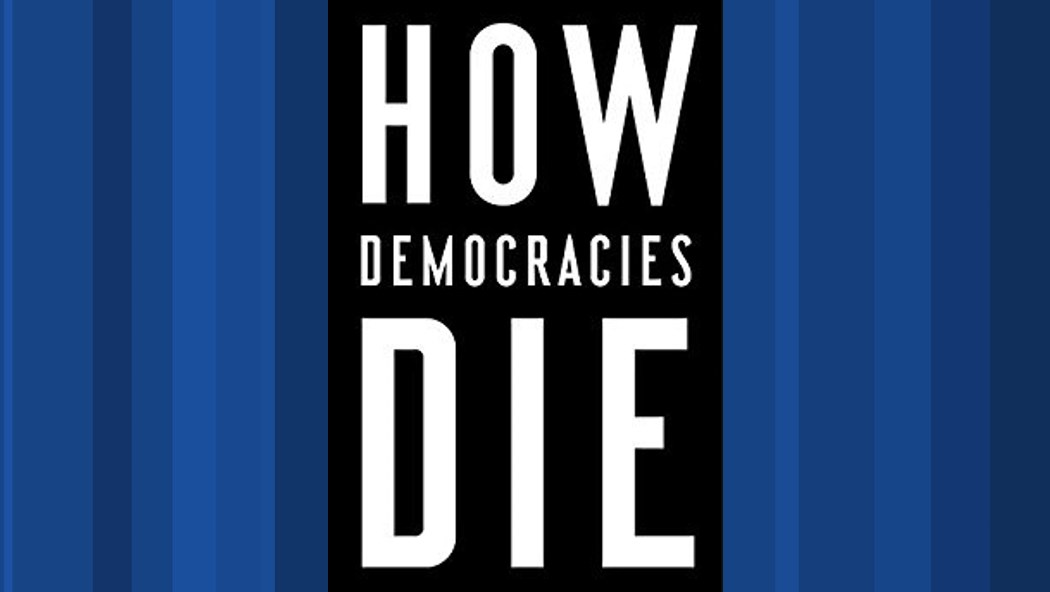
Part of a crop of alarm-raising books to have been published since Trump came to power (see also The People vs. Democracy above). As Levitsky and Ziblatt say, no democracy as rich or as established as America’s has ever collapsed, yet past stability is no guarantee of democracy’s future survival.
The value of this book lies in its identification of the warning signs based on the authors’ studies of Europe and Latin America over the past two decades. These include: the entering of anti-democratic politicians into the mainstream, the erosion of norms of partisan self-restraint and fair play, increasingly dysfunctional democratic institutions, and the defining of political opposition as treasonous.
They emphasize that while the number of outright coups overthrowing elected governments has decreased, another anti-democratic trend has arisen, the undermining of democracy by elected leaders themselves in countries such as Georgia, Hungary, Nicaragua, Peru, the Philippines, Poland, Russia, Sri Lanka, Turkey, Ukraine, the US, and Venezuela.
The authors’ conclusion is that democracy works best when reinforced by democratic norms. Two basic norms in the US are checks and balances on power and mutual toleration by political adversaries.
As the authors quite rightly emphasize, the troubles of US democracy run much deeper than Trump; he is more symptom than cause. Here are an extract and an opinion piece that lay out the book’s basic premises.
Orbán: Hungary’s Strongman, Paul Lendvai (Oxford University Press)

Much attention has been given to the rise of autocrats such as Putin, Erdogan and Duterte, but while Hungary is often referred to as another victim of strongmanism, it’s received far less study, most likely because it’s much smaller and regarded as less influential.
Yet it is a member of the European Union, which includes the most democratic countries in the world, and it is a relatively prosperous and well-educated country. This is the first book-length study in English of how Viktor Orbán has managed to amass political power unprecedented since the time of Communist dictatorship.
Orbán appears as an exceedingly clever manipulator. He knew that anything he did which evoked memories of previous European dictatorships, whether fascist or communist, would meet with strong resistance.
So he has focused on gaining control of the media and judiciary and on constructing an oligarchy of business interests which offer political support in return for economic benefits, while utilizing a propaganda low on ideology and high on flashwords (Christian, nation, immigration, etc).
While the anti-democratic leaders of Poland are still getting their act together and appear more vulnerable, Orbán has consolidated power, and the EU has proven distressingly feeble at defending its supposed core values of democracy, political freedom and human rights abroad and within its own borders. An excellent review and another good recent article on the topic.
End of an Era: How China’s Authoritarian Revival is Undermining Its Rise, Carl Minzner (Oxford University Press)
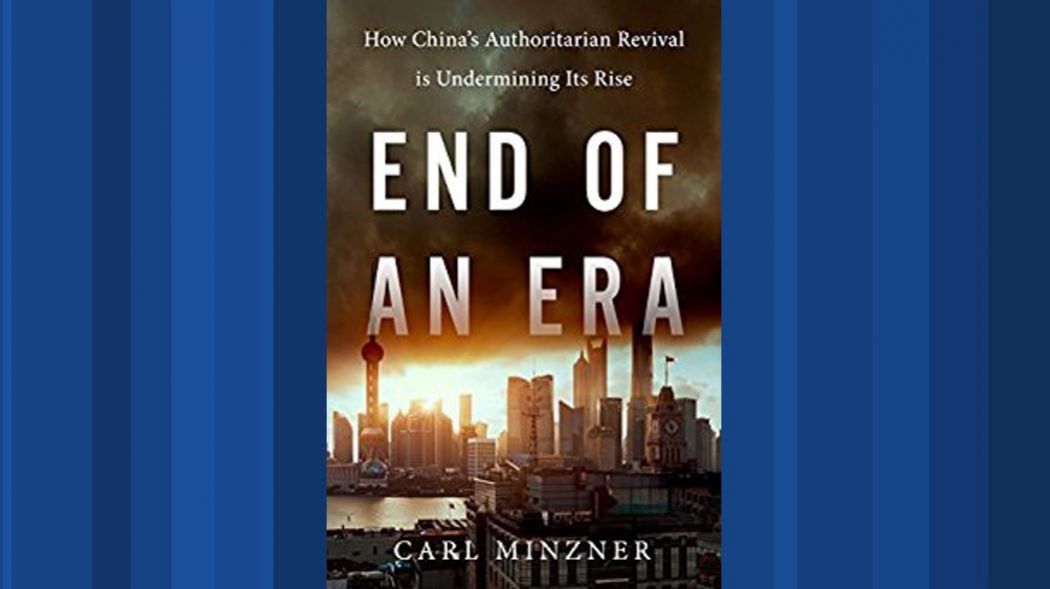
Considering how powerful and important China is, it is strange that its form of dictatorship has received relatively little scrutiny. The recent abolition of term limits received much media coverage, but it is actually part of a trend that precedes Xi Jinping.
The continuities perspective means seeing the dictatorship as fluctuating back and forth between periods of greater and lesser repression, rather than, say, “progressing” through economic and political reforms.
Indeed, there has been no significant political reform to speak of since the massacre of citizens and demonstrators in 1989. From this perspective, the establishment of term limits was never as big an innovation as it waas made out to be, given that in a dictatorship like China’s, the real power is always behind the scenes, not within formal institutions.
Central to Minzner’s argument is that the lack of political reform coupled with insufficient or stalled economic reform brings China to a dangerous moment. While it’s true there is a something’s-gotta-give feeling in the air, the idea that China’s current political system is unsustainable has been around for a while.
It’s possible, but when you have as much money as the Party does, coupled with strict censorship and huge investment in domestic “stability maintenance”, you can make a lot of mistakes and come away relatively unscathed.
The Long Hangover: Putin’s New Russia and the Ghosts of the Past, Shaun Walker (Oxford University Press) published December 2017

Shaun Walker is a long-time foreign correspondent in Russia, first for The Independent and more recently for The Guardian. His reports have been among the most trenchant, revealing a deep understanding of the society, and generally downbeat, a tone that pervades this book as well, starting as it does with the alcoholic metaphor of the title.
Walker’s focus is on how Putin has manipulated history for political power, especially the Czarist past and the defence of the homeland from Nazi invasion in the second world war.
The flipside of this focus on Putin and the powerful is an examination of the psychology of ordinary Russians, many of whom felt that with the collapse of the Soviet Union, they had lost their country, and Putin is giving it back to them.
The Color of Law: A Forgotten History of How Our Government Segregated America, Richard Rothstein (Liveright)

A forceful argument backed up by solid evidence that the racial segregation so prevalent in most US cities is the result of laws and policies enacted by federal, state and local authorities over decades beginning in the 1920s.
The segregation of African Americans as they migrated in large numbers to the north in the early part of the twentieth century was then reinforced by flawed urban redevelopment policies in the middle of the century so that by the time the 1968 Fair Housing Act came into force, the system was already deeply entrenched and largely remains to this day. An excellent review.
Old Demons, New Deities: Twenty-One Short Stories from Tibet, edited by Tenzin Dickie (OR Books) published in the US in December 2017

This book is worth it just for the introduction, by editor Tenzin Dickie. She quotes Junot Díaz: “If you want to make a human being a monster, deny them, at the cultural level, any reflection of themselves.” And then goes on, “We [Tibetans] grew up, those of us who grew up in exile but also those of us who grew up in Tibet, all of us, without reflections.”
What she means is that cultural production was so restricted that Tibetans had no way of conceiving of themselves and constructing their identities in any kind of common, shared way which made them the masters of their own destiny.
This book is part of a trend countering that. It emphasizes the importance of the construction of cultural identity across borders. The 21 stories here were written by Tibetans in Tibet and Tibetans in exile, in Tibetan and in English, as well as, in the case of Tsering Woeser, in Chinese.
Modern Tibetan literature is only about 40 years old, and this volume chronicles a culture unfolding. An excellent review.
When They Call You a Terrorist: A Black Lives Matter Memoir, Patrisse Khan-Cullors, Asha Bandele (St. Martin’s Press)

Together with Alicia Garza and Opal Tometi, Patrisse Khan-Cullors coined the Black Lives Matter hashtag in 2013 in response to the acquittal of the killer of black teenager Trayvon Martin. The phrase helped to solidify a movement and give it its identity.
This memoir is the story of Khan-Cullors’ life, showing how she emerged into activism from an upbringing in a poor neighborhood of Los Angeles, where she witnessed police prejudice and persecution of African-Americans.
The emphasis in her account is on not only the suffering but also the strength and joy that come from fighting for equality and one’s rights. The toll this activism can take on people is great: in the last two years alone, five prominent Black Lives Matter activists have died at a young age.
